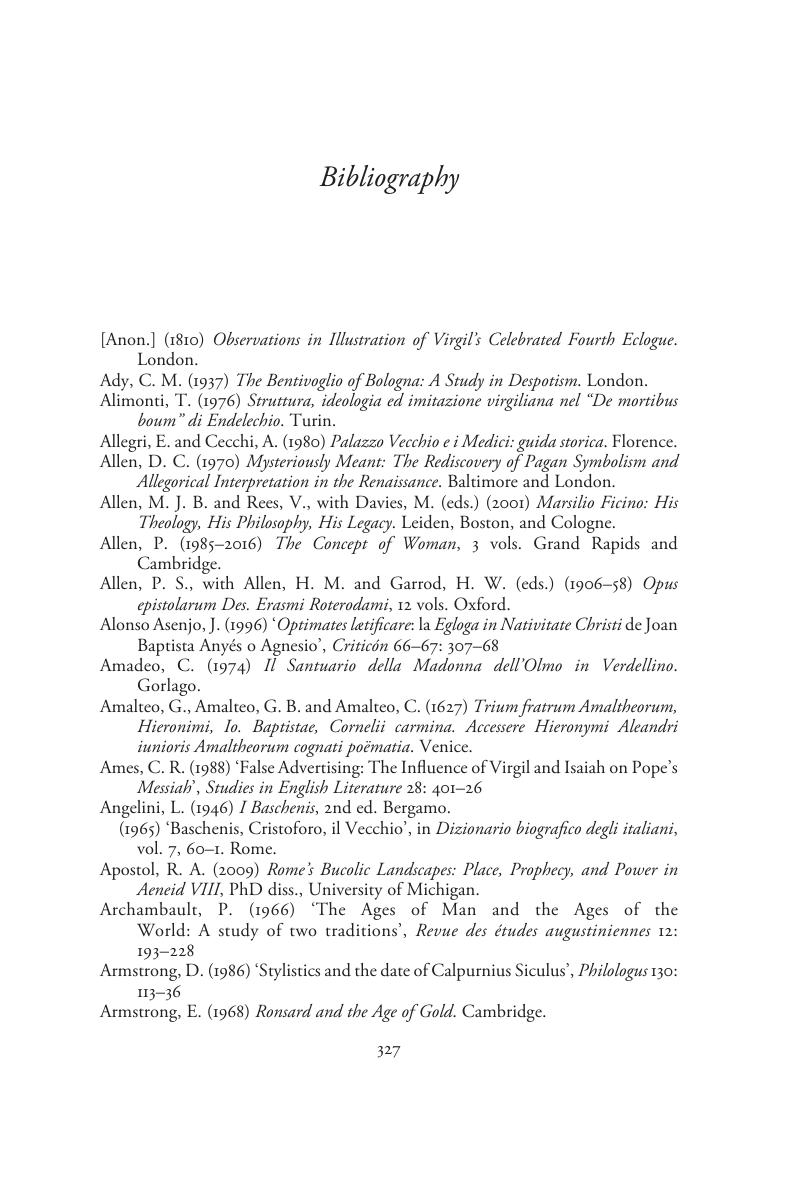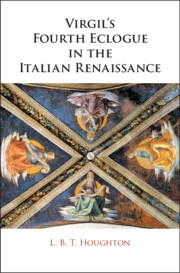Book contents
Bibliography
Published online by Cambridge University Press: 02 September 2019
Summary

- Type
- Chapter
- Information
- Virgil's Fourth Eclogue in the Italian Renaissance , pp. 327 - 366Publisher: Cambridge University PressPrint publication year: 2019

